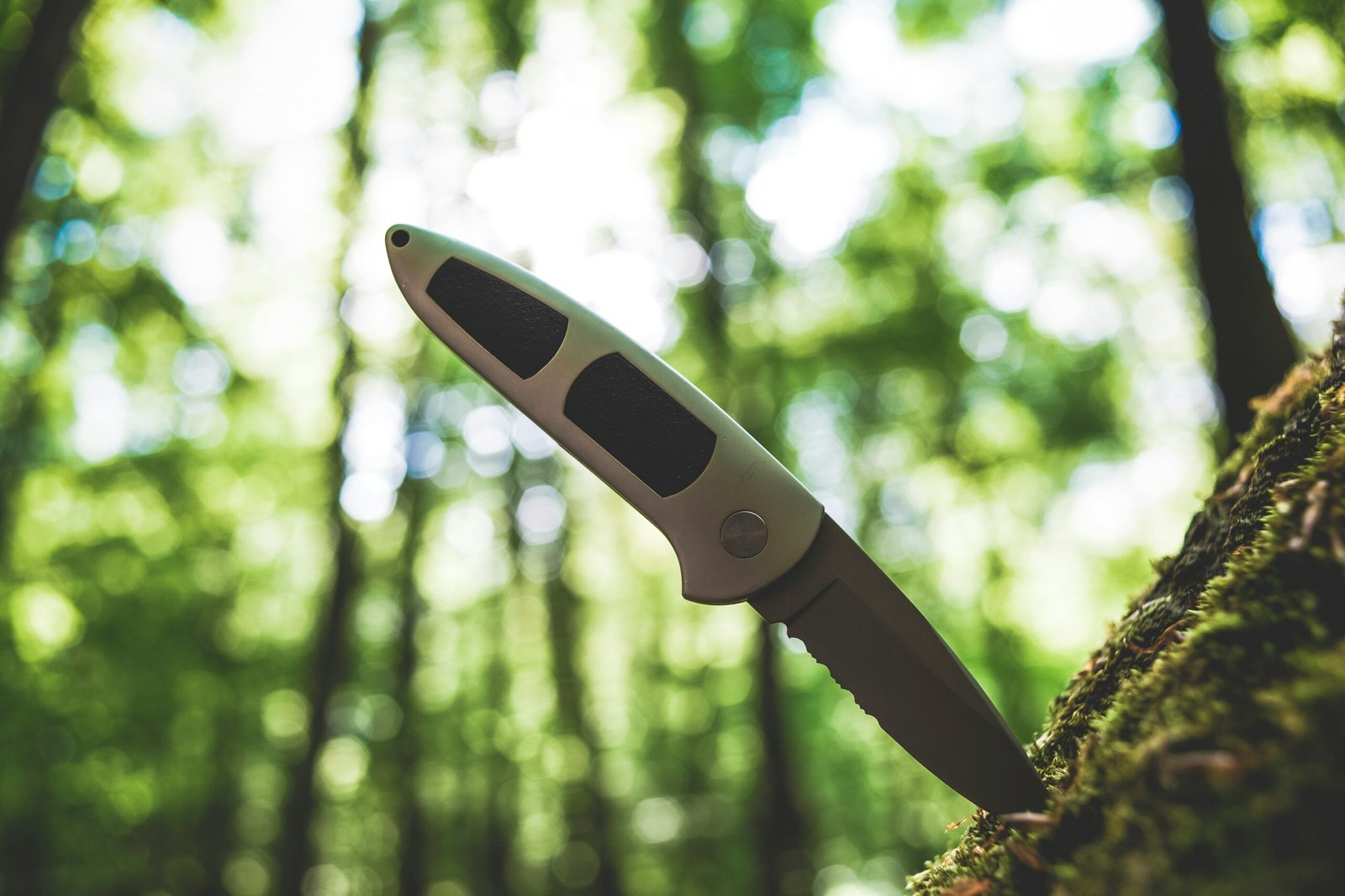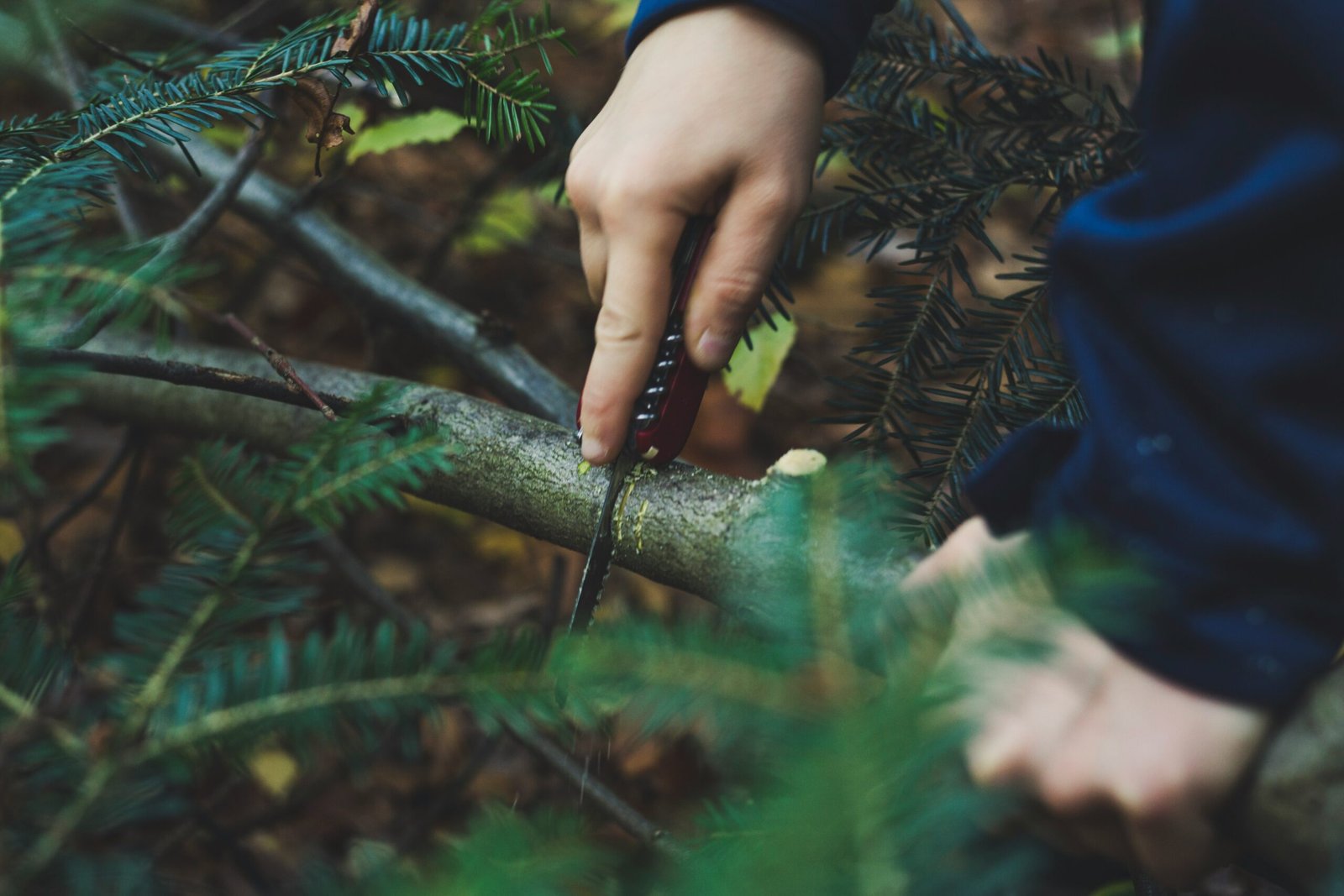
Introduction to Knife Sharpening
Knife sharpening is an essential skill for both culinary professionals and home cooks. A well-sharpened knife not only enhances the efficiency of food preparation but also plays a crucial role in ensuring safety while cooking. Dull knives can lead to increased accidents in the kitchen, as they require more force to cut, often resulting in slips and injuries. Therefore, keeping your knives sharp is vital for maintaining an effective and safe cooking environment.
Many individuals underestimate the importance of knife sharpening, believing that it is an unnecessary task or something that only chefs need to address. This misconception can lead to compromised safety and reduced performance in the kitchen. It is often thought that knife sharpening is a complex process that requires professional training or special tools, when in fact, with the right knowledge and practice, anyone can master the craft. Understanding the types of sharpening tools available, such as whetstones, pull-through sharpeners, and honing rods, can demystify the process and make it accessible for all.
Moreover, regular maintenance of kitchen knives does not only prolong their lifespan but also enhances the quality of culinary creations. A sharp blade allows for cleaner cuts, minimizing bruising of fruits and vegetables, which in turn helps preserve flavors and textures. As we delve deeper into the various techniques and methods of knife sharpening, it becomes evident how imperative this skill is for every individual involved in the culinary arts. In this blog post, we will explore the fundamental principles of knife sharpening and provide practical tips that will enable you to sharpen your knives like a pro.
Understanding Knife Anatomy
To effectively sharpen your knife, it is essential to understand its anatomy, including various components that contribute to its performance. A knife consists of several key parts: the blade, edge, tip, spine, and handle. Each of these components plays a vital role in the knife’s functionality and efficiency.
The blade is the principal part of the knife and is typically made from various materials, such as stainless steel or carbon steel. The quality of the blade material greatly influences its sharpness and durability. It is important to note that blades come in different shapes and sizes, tailored for specific cutting tasks. Understanding the type of blade your knife has will aid in selecting the appropriate sharpening technique.
Next, the edge is where the cutting action occurs. It is the beveled part of the blade that must remain sharp for efficient cutting. The edge can vary in design; some knives feature a straight edge for precision cuts, while others may have a serrated edge for slicing through tougher materials. When sharpening, the angle of the edge greatly impacts its sharpness and cutting ability.
The tip of the knife is the pointed end, which allows for detailed tasks, such as piercing. A well-maintained tip facilitates better control and precision, making it essential for certain culinary tasks. Moving along the blade, the spine is the top, unsharpened edge. It provides strength to the knife and contributes to the overall balance and handling. Maintaining the spine ensures stability during use.
Lastly, the handle provides the user with a comfortable grip. A secure handle is vital for safety and control, especially during sharpening. Understanding these components will not only help in sharpening your knife efficiently but also in maintaining its performance over time. Regular attention to each part ensures a fully functioning tool in your kitchen or workshop.
Choosing the Right Sharpening Tools
When it comes to maintaining a knife’s edge, selecting the appropriate sharpening tool is essential. Various options are available, each with distinct advantages and limitations. Among the most commonly used sharpening tools are whetstones, honing rods, pull-through sharpeners, and electric sharpeners, each serving a specific purpose in knife care.
Whetstones, often favored by professional chefs and knife enthusiasts, provide an unparalleled sharpening experience. They allow for precise control over the angle and the amount of material removed from the blade. Whetstones come in multiple grits, offering flexibility for both coarse and fine sharpening. However, they require practice and skill to use effectively, which may not suit all users.
Honing rods, on the other hand, are ideal for regular maintenance. While they do not sharpen a dull edge, they realign the blade’s steel, helping to maintain sharpness between more intensive sharpening sessions. These rods are simple to use and can extend the life of a blade but should be combined with other tools for comprehensive sharpening.
Pull-through sharpeners offer a convenient, user-friendly option for those who may not feel comfortable using a whetstone. These sharpeners have preset angles, making it easy to achieve a consistent edge. However, they can be somewhat aggressive and may remove more steel than necessary if misused. Therefore, understanding the specific requirements of the knife is crucial.
Lastly, electric sharpeners provide speed and efficiency, perfect for those who value convenience. They deliver consistent sharpening results but may compromise on the fine-tuning that hand sharpening offers. Choosing the right tool ultimately hinges on the user’s skill level, the knife type, and personal preferences.
Basic Knife Sharpening Techniques
Sharpening a knife is an essential skill for anyone who utilizes these tools in the kitchen. Proper knife maintenance not only prolongs the life of the blade but also enhances cutting efficiency. Several basic techniques exist for sharpening a knife, including using a whetstone, honing rod, and pull-through sharpener. Each method has its unique approach, suitable for both beginners and experienced users.
To begin, the whetstone is one of the most effective and traditional tools for knife sharpening. It typically consists of two sides: coarse and fine. To use a whetstone, soak it in water for about 10 to 15 minutes. Once adequately soaked, place the stone on a non-slip surface with the coarse side facing up. Position the knife at an angle of approximately 20 degrees against the stone. Apply gentle pressure as you slide the blade across the stone in a sweeping motion. Repeat this process for about five to ten strokes before flipping the stone to the fine side to refine the edge.
Next, the honing rod serves as both a sharpening tool and a means of realigning the blade edge. Begin by holding the honing rod vertically. Position the knife at a 15 to 20-degree angle against the rod. Draw the knife down the rod while maintaining that angle, ensuring to cover the entire length of the blade. Alternate sides, performing about five strokes on each side, to achieve a straight edge.
Lastly, for those seeking convenience, a pull-through sharpener is an advantageous option. This tool features a guided slot for the knife. To use it, simply insert the blade and pull it through the sharpener in a smooth motion. The block typically contains ceramic rods for effective sharpening. While this method is quick, it may not yield the same level of precision as the other techniques. Mastering these basic knife sharpening techniques will undoubtedly improve your culinary experience and contribute to safer food preparation.
Advanced Sharpening Techniques
For those who aspire to refine their knife sharpening skills, advanced techniques such as freehand sharpening and compound sharpening serve as invaluable tools in achieving a razor-sharp edge. Freehand sharpening refers to the process of holding the knife at the desired angle while using a sharpening stone. This technique requires practice to master, as maintaining the correct angle is crucial for effective sharpening. A consistent angle typically ranges from 15 to 20 degrees for most kitchen knives, while specialty knives may require specific angles.
Another proficient method is compound sharpening, which involves using more than one type of sharpening medium. This technique may include starting with a coarser stone to repair and reshape the blade, followed by a finer stone to polish the edge. For professionals, applying a leather strop with compound after using a whetstone can further enhance the blade’s sharpness and remove any microscopic burrs that may remain after sharpening.
When addressing different blade types, the approach can vary significantly. Straight-edged knives generally require a straightforward sharpening process, where consistent strokes along the sharpening device yield the desired result. In contrast, serrated knives present unique challenges; the scalloped edges necessitate a different focus. Using a specialized serrated knife sharpener or honing rod designed for these types is essential to ensure the tips of each serration become sharp without damaging the blade’s integrity.
For seasoned individuals seeking to advance their skills, paying attention to blade maintenance is critical. Regular honing of knives after each use prevents the edge from dulling and prolongs the intervals between sharpening sessions. Moreover, understanding the characteristics of various blade materials—such as stainless steel versus high-carbon steel—can significantly impact the overall sharpening strategy. By incorporating these advanced techniques and insights, one can achieve professional-level results in knife sharpening.
Maintaining Your Knife after Sharpening
Post-sharpening knife maintenance is essential for preserving the quality and longevity of your kitchen tools. Proper care not only prolongs the sharpness of your knife but also ensures safety during use. One of the foremost steps in maintaining your knife is to clean it thoroughly after each use. This prevents food residues from corroding the blade or the handle. To clean your knife, use warm soapy water and a soft cloth, avoiding abrasive sponges that could scratch the surface. After washing, always dry the knife immediately to prevent water spots and rust formation.
Storage also plays a crucial role in maintaining the edge of your knife. Storing your knife in a wooden or magnetic knife block, or using a blade guard, can protect the edge from damage caused by contact with other utensils. Avoiding drawer storage without protection is advisable as it can lead to dulling and nicks due to accidental collisions. Proper storage also minimizes the risk of injury, making it safer for everyone in the kitchen.
Another important technique to consider is honing your knife regularly. Honing, which involves using a honing steel, helps realign the blade’s edge and maintains sharpness between sharpenings. It is a simple yet effective practice that can be performed before or after each use. Additionally, being able to identify signs of dullness is essential in knife maintenance. If your knife struggles to slice through food or requires excessive pressure to cut, it’s time to take action, either by honing or sharpening again as needed. Recognizing these indicators will help you use your knives more effectively and avoid the frustration of using a dull tool.
Ultimately, implementing these knife maintenance techniques will significantly enhance the longevity and performance of your knives, allowing you to enjoy the benefits of a well-maintained cutting tool for years to come.
Common Mistakes in Knife Sharpening
Knife sharpening can be a daunting task for many, especially for those lacking experience. However, several common mistakes often hinder the sharpening process and can lead to less than optimal results. Understanding these pitfalls is essential for achieving a professional-level edge on your knives.
One prevalent error is using the wrong sharpening angle. Most knives are designed with a specific bevel angle, typically ranging from 15 to 20 degrees. When sharpening, straying from this angle can hinder the knife’s ability to maintain its cutting efficiency. To avoid this mistake, it is crucial to familiarize oneself with the manufacturer’s recommended angle for each knife type. Utilizing a guide or tool that maintains consistent angles can significantly improve the sharpening process.
Furthermore, applying excessive pressure while sharpening is another common mistake. Many individuals believe that the harder they press, the sharper their knife will become. In reality, applying too much pressure can damage the blade and create uneven edges. The right approach is to use a light touch, allowing the sharpening medium to do the work. This method not only prolongs the life of the knife but also leads to a more even and effective edge.
Neglecting edge maintenance is also a critical misstep many make. After sharpening, it is essential to regularly maintain the knife edge to ensure optimal performance. This includes honing the knife between uses, which realigns any misaligned edge that develops during cutting tasks. Failing to perform regular maintenance can lead to the knife becoming dull much sooner than anticipated, necessitating more frequent sharpenings.
By being mindful of these common mistakes—using the correct angle, avoiding excess pressure, and maintaining the edge—individuals can significantly enhance their knife sharpening skills, resulting in a sharper and more effective cutting tool.
Safety Tips for Knife Sharpening
Knife sharpening is a fundamental skill for anyone who works with knives, whether in professional kitchens or at home. However, the process involves certain risks, and adopting essential safety practices is crucial to prevent accidents and injuries. Firstly, always ensure to handle knives with care. When picking up a knife, grasp it by the handle, avoiding any contact with the blade. Store your knives properly when not in use, ideally in a knife block or magnetic strip, to minimize the risk of accidental cuts.
Stability is another key factor during the sharpening process. Use a non-slip surface, such as a cutting board or a dedicated sharpening station, to ensure that your sharpening tool remains steady. If you are using a sharpening stone, ensure it is placed on a damp cloth or a non-slip mat to prevent it from slipping while in use. This will help you maintain control over the knife and reduce the likelihood of mishaps.
Creating a safe working environment is equally important when sharpening knives. Clear the surrounding area of any obstacles or clutter that could pose a risk of tripping or losing focus. Make sure that you have adequate lighting to clearly see the knife and the sharpening apparatus. Additionally, keeping the area dry can prevent slipping, which is especially important when handling sharp objects. Finally, it is wise to wear protective gloves when handling or storing very sharp knives, further minimizing any risks associated with accidental contact.
By adhering to these safety tips, you can sharpen your knives effectively while keeping yourself and your surroundings safe. Knife sharpening might seem straightforward, but being vigilant and cautious can make a significant difference in your safety and the longevity of your knives.
Conclusion and Final Thoughts
In wrapping up our discussion on how to sharpen your knife like a pro, it is vital to recognize that knife maintenance is an essential skill that transcends basic cooking proficiency. We have delved into the various techniques, tools, and the science behind achieving a razor-sharp edge. Understanding the distinct angles required for different types of knives, whether a chef’s knife or a paring knife, empowers you to make informed decisions that greatly affect cutting performance.
Moreover, we explored the importance of consistent practice and the nuances of handling sharpening tools, such as whetstones and honing rods. Each technique provides unique benefits, enabling you to tailor your sharpening approach based on personal preference and the specific knife’s needs. As with any skill, becoming proficient at knife sharpening requires time and patience. Regular practice not only builds your confidence but also enhances your culinary experience, making food preparation more enjoyable and efficient.
Additionally, a well-maintained knife improves safety in the kitchen. Dull knives can lead to accidents, as they require more force and can slip during use. By keeping your knives sharp, you ensure that each cutting task is handled with precision and care, reducing the risk of injury.
In conclusion, we encourage you to take the information shared in this blog post and apply it in your kitchen. Embrace the learning process and utilize the various techniques discussed to cultivate your knife sharpening skills. This valuable ability will elevate your culinary capabilities, providing both efficiency and pleasure in your cooking endeavors. Commit to regular practice, and over time, you will surely sharpen your skills and enjoy the fruits of your labor.


